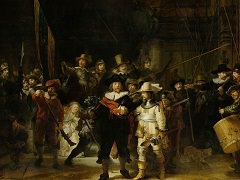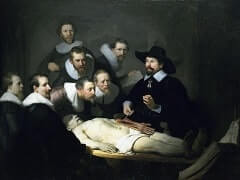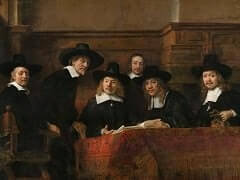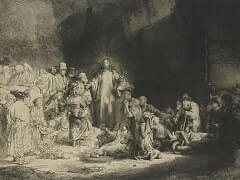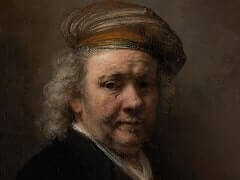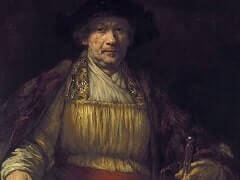Self Portrait at Age 34 by Rembrandt van Rijn

In his Self Portrait, Rembrandt was costumed in the grand manner of sixteenth century, with a slashed sleeve and a fur-edged tabard, a gold chain fastened about his chest and another decorating his hat, Rembrandt
embodiment of noble self-possession, the uncontested Apelles of Amsterdam. In his painterly manner he made the case for his succession to the great Renaissance traditions of disegno (drawing) and colore, respectively
embodied in Raphael and Titian.
Raphael had been praised by Vasari as the superior of sculptors for his legendary ability (in the Portrait of Pope Leo X) to render the material textures of velvet, damask, and silk, and on this occasion Rembrandt used
his own self-portrait to demonstrate his unparalleled mastery of those same descriptive skills. At the same time, though, the tonal unity of the painting, the fluid brushwork, and the perfectly judged way in which his
figure is positioned within its allotted space made his claim to be Titian's heir not entirely presumptuous.
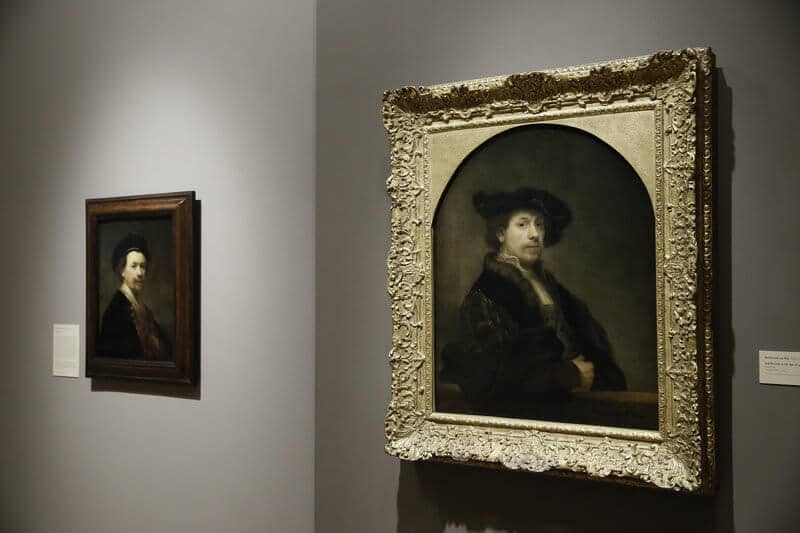
Above all, Rembrandt had mastered Titian's technique of making his portrait subjects come alive through the fine adjustment of countless subtle details. There is, for example, a fine line of white paint that extends from the corner of the right eye where it meets the bridge of the nose down toward the lower edge of the cheek. That line both defines the cheekbone and, together with the white accent on the tip of Rembrandt's nose, gives a slightly glistening tone to the skin, as though the sitter were lightly perspiring in his heavy clothes.


